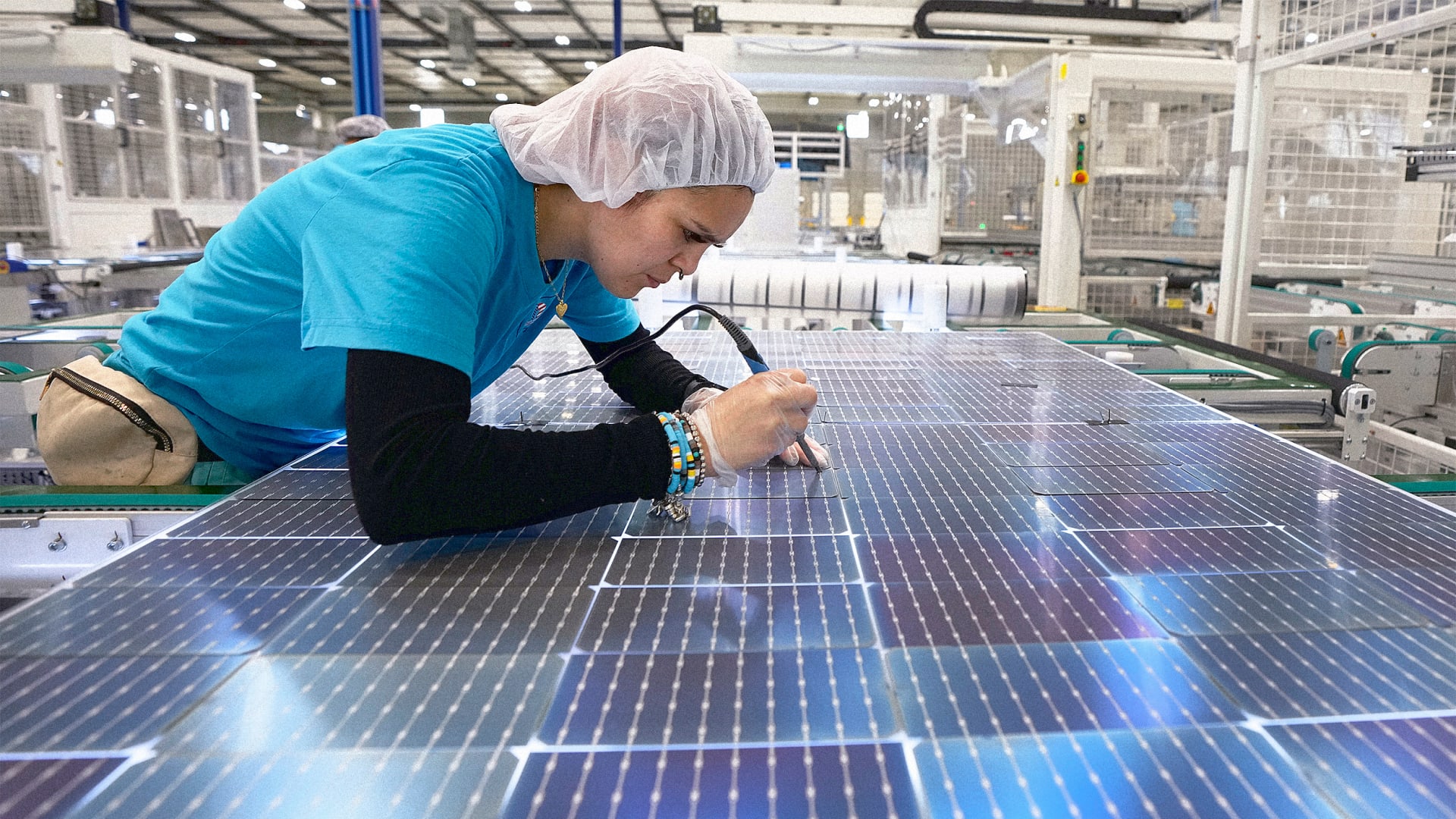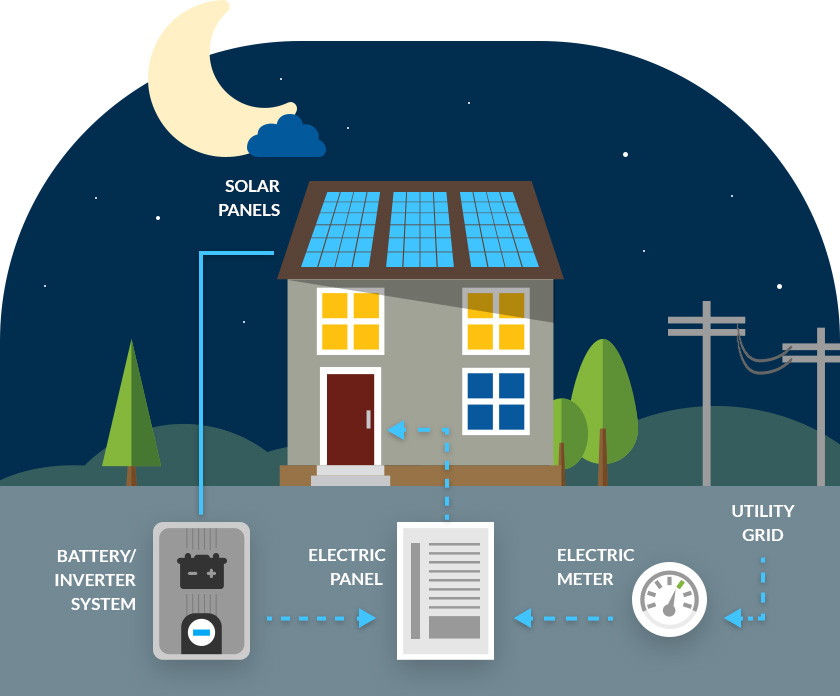The Ultimate Guide To Solar Panel Company
The Ultimate Guide To Solar Panel Company
Blog Article
Virginia Solar Tax Credit 2024: Lumina Solar Concentrates On Providing Advanced Photovoltaic Solutions For Homes And Businesses
History and Establishing
Have you ever wondered how a photovoltaic panel business springs from a mere spark of motivation into a powerhouse of renewable resource? It frequently begins with a vision-- one sustained by a mix of innovation, decision, and a pinch of serendipity. The journey of numerous more info solar companies mirrors the advancement of the technology itself: from large, ineffective panels to streamlined, high-efficiency marvels harnessing the sun's bounty.
The Early Days
In the late 20th century, when solar energy was still a niche concept, leaders planted seeds for what would become an international motion. Think of a small workshop filled with curious engineers, tirelessly experimenting with photovoltaic cells. Their passion was palpable, typically driven by a desire to fight climate modification and decrease dependence on nonrenewable fuel sources.
One such anecdote has to do with a founder who, motivated by an outdoor camping trip, recognized that even in remote locations, the sun could power essential gadgets. This easy observation sparked a business's objective to equalize access to clean energy.
Establishing Concepts

- Innovation: Constantly pressing the borders of solar technology to improve performance and resilience.
- Sustainability: Dedicating to environmentally friendly production and lowering carbon footprints.
- Ease of access: Making renewable energy solutions economical and practical for daily users.
Milestones in Development
| Year | Key Occasion |
|---|---|
| 1985 | Business established in a little garage, concentrating on research and advancement. |
| 1995 | Business solar panel product introduced, getting regional attention. |
| 2005 | Expanded to international markets, accepting worldwide eco-friendly energy objectives. |
| 2015 | Introduced advanced solar panel innovation with enhanced energy conversion. |
Isn't it fascinating how these incremental steps, typically ignored, form the energy landscape today? The photovoltaic panel business story is not practically innovation; it has to do with a relentless quest for a brighter, cleaner future.

Developments in Solar Panel Technologies
Ever noticed how some photovoltaic panels shine brighter and last longer? It's not magic; it's the science of photovoltaic efficiency. Modern solar panel business invest heavily in technologies like bifacial cells, which record sunlight from both sides, increasing energy harvest without broadening roofing space. Have you ever wondered why some panels perform better on cloudy days? That is because of advances in thin-film solar innovation, which flourishes under diffused light conditions.
Product Variations Customized to Unique Needs
One size never fits all. Solar panel service providers now offer:
- Monocrystalline panels for maximum effectiveness and sleek looks, perfect for space-constrained rooftops.
- Polycrystalline panels, which use a cost-efficient option without compromising excessive output.
- Building-integrated photovoltaics (BIPV), combining solar tech seamlessly into architectural components like windows and facades.
Selecting the right item isn't simply about upfront cost; it's about matching your environment, energy objectives, and long-term cost savings. Homes shaded by trees need panels that excel in low-light circumstances, something many ignore till energy bills climb all of a sudden.
Technical Tips for Optimum Selection
- Assess the temperature coefficient-- lower values indicate panels lose less effectiveness on hot days.
- Look for panels with enhanced anti-reflective coatings to take full advantage of light absorption.
- Think about the panel's warranty not simply for flaws, however for guaranteed power output over decades.
- Do not underestimate the value of the inverter technology coupled with the panels; it can make or break your system's performance.
Beyond Panels: Emerging Patterns
Picture photovoltaic panels that change their angle instantly to chase the sun-- tracking systems are becoming more accessible, increasing yield significantly. Or solar tiles that blend invisibly into your roofline, transforming your home into a quiet, self-dependent power generator. These developments are improving what a photovoltaic panel company offers-- not just items, but incorporated energy options.
Market Existence and Global Operations
Ever question why some photovoltaic panel business seem to sprout up in every corner of the world while others barely make a ripple? The distinction lies not just in technology but in mastering the art of navigating diverse markets. Expanding globally is like planting seeds in various climates-- you should understand each environment's distinct conditions to prosper.
Take, for example, the intricate dance of logistics and supply chain management. Shipping panels halfway across the world isn't simply about distance; it's about timing, customizeds, tariffs, and adapting to local demand variations. A business with robust worldwide operations expects these variables, making sure panels get here on schedule without pumping up costs. This insight is no little task and often separates industry leaders from followers.
Key Techniques for Expanding Market Existence
- Localized manufacturing: Establishing production centers near target markets lowers shipping delays and import intricacies.
- Strategic partnerships: Collaborating with local companies speeds up market penetration and develops trust.
- Adaptive product design: Customizing photovoltaic panel tech to weather, sun strength, and facilities subtleties improves performance and approval.
What about the human element? Solar panel business operating internationally must fix up cultural distinctions and regulatory subtleties without losing sight of their core mission. For example, what works in a sun-drenched desert might falter in a humid seaside region. Sometimes, the most ingenious service is just listening-- absorbing local insights to fine-tune technology and approach.
Experts frequently advise a phased rollout instead of a shotgun growth. Why risk overextension when determined development constructs sustainable momentum? Scaling wisely suggests balancing aspiration with operational strength - Best Solar Panel Company Virginia. In the race for sustainable energy supremacy, patience can be as important as speed.
Ecological Effect and Sustainability Practices
When photovoltaic panels first emerged, many presumed they brought zero environmental baggage. Nevertheless, the reality is more nuanced. The production of photovoltaic cells includes unusual earth metals and energy-intensive procedures, which can leave a sizable carbon footprint before the panels even reach rooftops. The real environmental expense depends greatly on the sustainability practices employed by the photovoltaic panel business throughout the lifecycle of their items.
How typically do we stop briefly to consider what happens to photovoltaic panels at the end of their beneficial life? Unlike batteries or electronics, photovoltaic panels can last 25-30 years, but disposal and recycling paths remain underdeveloped in lots of regions. A company committed to minimizing environmental damage will have a robust prepare for recycling photovoltaic materials, restoring important silicon, glass, and metals to prevent landfill build-up.
Key Sustainability Strategies
- Using low-impact manufacturing methods that minimize water and energy usage.
- Carrying out closed-loop systems to recycle production waste back into new panels.
- Taking part in transparent supply chain audits to make sure ethical sourcing of basic materials.
- Designing panels for simpler disassembly to aid future recycling efforts.
It's worth noting that some solar business have actually originated ingenious methods, such as incorporating naturally degradable parts or using less hazardous chemicals during fabrication. This not only minimizes environmental pressure but also sets a precedent for the market. The concern stays: can the solar market really pivot towards a circular economy model without sacrificing efficiency or price?
Specialist Tips for Assessing Sustainability
- Inquire about the company's commitment to carbon-neutral production and whether they offset emissions.
- Investigate if they partner with accredited recycling facilities devoted to photovoltaic panel waste.
- Look for transparency reports detailing environmental effects and sustainability objectives.
- Consider the longevity and guarantee of panels as an indirect step of resource performance.
In the end, selecting solar power should indicate more than simply slashing electrical energy costs; it has to do with supporting a future where energy is gathered properly and waste is thoughtfully handled. Solar panel companies that embrace this viewpoint not just brighten homes but likewise cast a brighter light on sustainable innovation.
Report this page